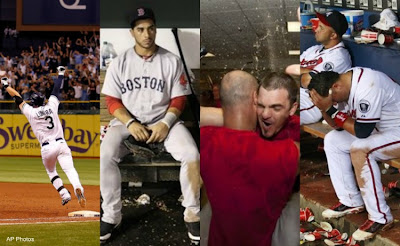Angel fans can forget about not keeping Mark Teixeira and missing out on Carl Crawford and Adrian Beltre in year's past, because Albert Pujols, the best hitter of this generation, will be calling Angel Stadium home.
The deal that brought Pujols to Southern California will cost owner Arte Moreno $254 million over the next decade, that's nearly $70 million more than Moreno paid for the franchise when he bought it in 2003.
It's way too early to start talking about whether signing Pujols, who's turning 32 next month, to a 10-year deal is worth it, because the Angels sent a giant message they want more than division banners.
Now if the Angels raise more World Series pennants, more than Pujols, its other free-agent signing Thursday could push them over the top.
The Halos essentially stole C.J. Wilson, the best free-agent pitcher on the market, away from division rival Texas.
Just how valuable was Wilson?
Last year, Wilson had the fourth highest Wins Above Replacement (WAR) rate at 5.9 in the American League, finishing ahead of Angels ace Jered Weaver. WAR is an attempt to summarize a player's total contributions in one statistic.
Take six wins away from Texas and add six for the Angels, and Los Angeles takes the AL West crown.
Wilson was an integral part of the Rangers rotation, going 31-15 with a 3.14 ERA the past two seasons. He was the ace in Arlington, but now Wilson will likely be the No. 3 starter in Anaheim behind Weaver and Dan Haren.
It's a huge addition to the rotation for the Angels, but it's an equal loss for Texas.
The Angels have watched the playoffs from home the last two years, while the Rangers have made it to back-to-back World Series.
Those fortunes could be changing, because the Halos just got significantly better.



























